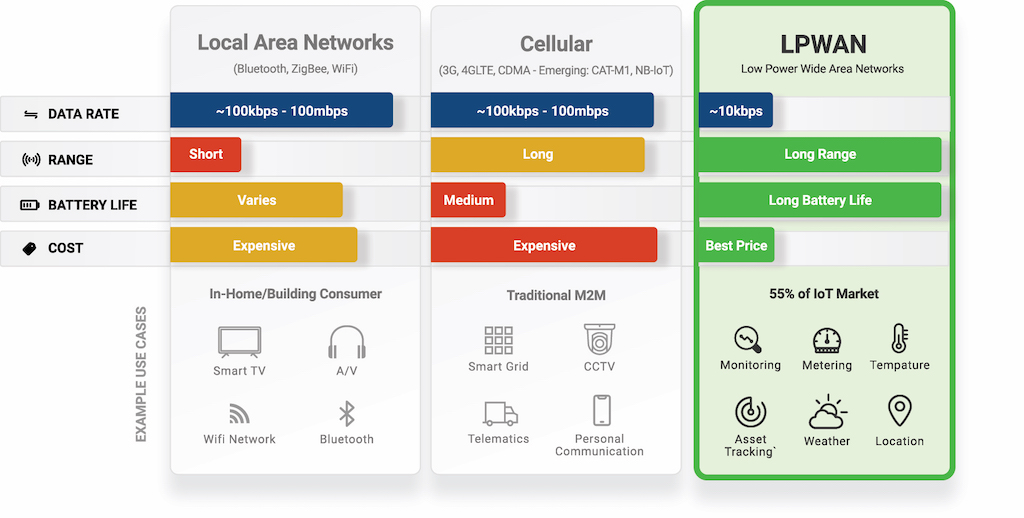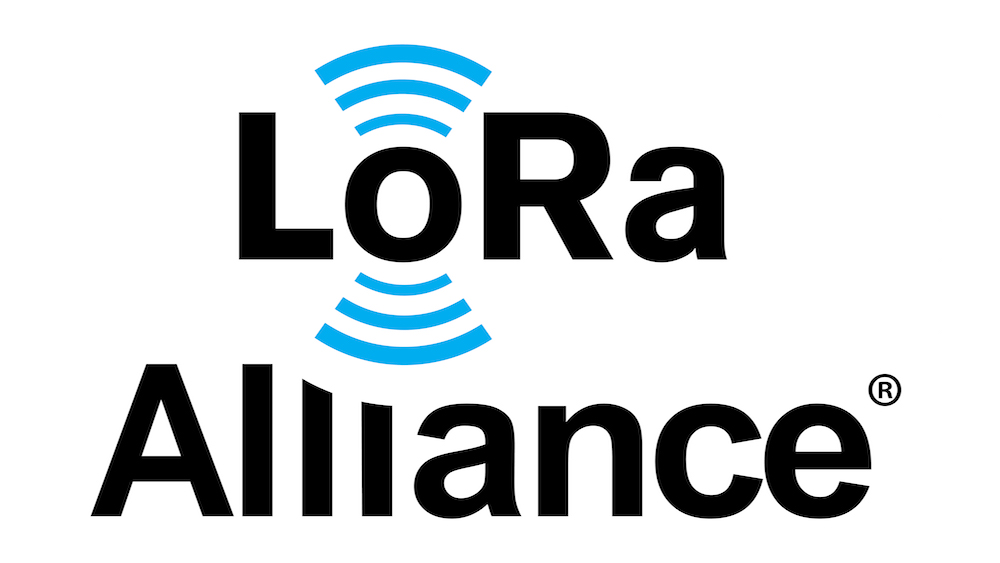LoRa® and LoRaWAN®
The Global Standard for Low Power Wide Area IoT Networks
A New Wave of IoT Innovaton
Of the billions of IoT sensor-enabled devices expected to be connected over the next few years, more than half are estimated to operate using Low Power Wide Area Networks (LPWANs). Designed for sensors and applications that need to send and receive small amounts of data just a few times per hour or maybe only once a day, LPWANs are transforming the way things are monitored and measured, resulting in solutions and business models that otherwise would not be possible.
IoT Connectivity Landscape
With a diverse set of IoT applications characterized by different demands, there is no “one technology fits all” approach to delivering connectivity for all IoT applications. The emergence of Low Power Wide Area Networks (LPWANs), however, is fundamentally changing the IoT landscape. The cost and functionality gap between cellular and local-area networks has created an opportunity for LPWAN technologies, which excel at enabling low power, long range sensor applications where only small amounts of data are required. It is estimated that more than half of all IoT solutions will be best suited for LPWAN connectivity.

LoRa, LoRaWAN and the LoRa Alliance®

The LoRa Alliance is the fastest growing technology alliance today. A non-profit association of more than 500 member companies, the LoRa Alliance is committed to enabling large scale deployment of Low Power Wide Area Networks (LPWAN) through the development and promotion of the LoRaWAN open standard. Members benefit from a vibrant ecosystem of active contributors offering solutions, products & services, which create new and sustainable business opportunities. Through standardization and the accredited certification scheme the LoRa Alliance delivers the interoperability needed for LPWA networks to scale, making LoRaWAN the premier solution for global LPWAN deployments.
LoRa and LoRaWAN
LoRa (short for long range) is a spread spectrum modulation technique derived from chirp spread spectrum (CSS) technology. Invented by Semtech, LoRa technology is a long range, low power wireless platform that has become the de facto technology for Internet of Things (IoT) networks worldwide.
The LoRaWAN open specification is a low power, wide area networking (LPWAN) protocol based on LoRa Technology. Designed to wirelessly connect battery operated things to the Internet in regional, national or global networks, the LoRaWAN protocol leverages the unlicensed radio spectrum in the Industrial, Scientific and Medical (ISM) band. The specification defines the device-to-infrastructure of LoRa physical layer parameters and the LoRaWAN protocol, and provides seamless interoperability between devices.
Visit the LoRa Alliance website to learn more:
The Benefits of LoRaWAN
The technology utilized in a network supporting the LoRaWAN protocol is designed to connect low-cost, battery-operated sensors over long distances and offers unique benefits in terms of bi-directionality, security, mobility, and accurate localization.
Key attributes of LoRaWAN include:
- Connectivity over long ranges: >15 miles rural and > 5 miles urban
- Long battery power life: 10 or more years from AA battery for low-cost low-power devices
- Best-in-class interference and noise immunity: LoRa modulation and flexible channel plans
- Dynamically optimized performance: Fastest data rates, Shortest time-on-air, Densest device deployments
- Fixed, nomadic and mobile device support
- Bidirectional communication allowing for device configuration and control
- LoRaWAN Geolocation services
- Firmware Over the Air Updates (FUOTA)
- Built-in security: AES-128 CCM, Privacy, authenticity and message integrity are assured end-to-end
